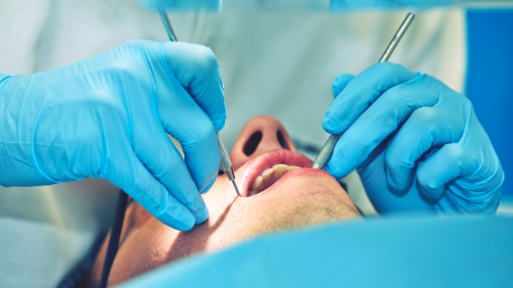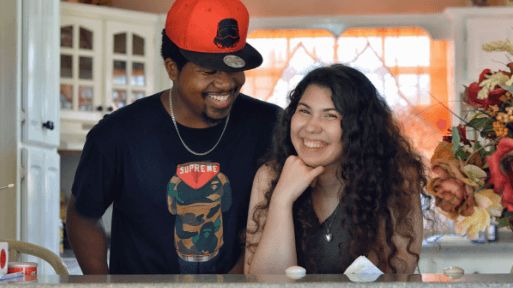The Importance of Regular Dental Check-ups
 We all know that a dazzling smile can make a lasting impression, but behind every bright smile is a history of regular dental check-ups. Dental check-ups are an integral part of maintaining oral health and preventing dental diseases. This is particularly significant because poor oral health can have repercussions on overall well-being.
We all know that a dazzling smile can make a lasting impression, but behind every bright smile is a history of regular dental check-ups. Dental check-ups are an integral part of maintaining oral health and preventing dental diseases. This is particularly significant because poor oral health can have repercussions on overall well-being.
Regular dental check-ups are essential to maintain optimal oral health. These check-ups usually involve a thorough cleaning and examination of your teeth and gums, helping to catch early signs of any potential problems such as cavities, gum disease, or oral cancer, ensuring that they are addressed promptly.
Early Detection of Dental Issues
One of the primary benefits of regular check-ups is the early detection of dental issues such as cavities and gum disease. Detecting these problems early can save you from the discomfort of advanced dental problems and the expense of more extensive procedures like root canals and tooth extractions.
The Smile-Inducing Benefits of Dentures
 Dentures have been a reliable solution for tooth loss for countless years. Whether due to injury, decay, or aging, many individuals find themselves in need of dentures to restore function, aesthetics, and confidence. Far beyond the practical advantages, dentures can truly transform lives by providing a myriad of benefits that are sure to bring a smile to anyone’s face.
Dentures have been a reliable solution for tooth loss for countless years. Whether due to injury, decay, or aging, many individuals find themselves in need of dentures to restore function, aesthetics, and confidence. Far beyond the practical advantages, dentures can truly transform lives by providing a myriad of benefits that are sure to bring a smile to anyone’s face.
1. Restored Functionality:
One of the most immediate benefits of dentures is the restoration of functionality. Dentures enable individuals to chew and speak more effectively, allowing them to enjoy their favorite foods and engage in conversations without struggle, thus enhancing the overall quality of life.
2. Improved Appearance:
Tooth loss can affect facial structure, causing a sunken and aged appearance. Dentures help in maintaining the natural face shape by providing the needed support, resulting in a more youthful and vibrant look. They also fill the gaps left by missing teeth, creating a complete and appealing smile.
Teeth Sensitivity – Causes and Solutions
 Teeth sensitivity is a common dental issue that affects millions worldwide. It manifests as a sharp, sudden pain when teeth are exposed to cold, hot, sweet, or acidic stimuli. Understanding the causes and solutions for teeth sensitivity can guide you in managing this uncomfortable condition and maintaining a healthy, pain-free smile.
Teeth sensitivity is a common dental issue that affects millions worldwide. It manifests as a sharp, sudden pain when teeth are exposed to cold, hot, sweet, or acidic stimuli. Understanding the causes and solutions for teeth sensitivity can guide you in managing this uncomfortable condition and maintaining a healthy, pain-free smile.
Potential causes of teeth sensitivity:
- Enamel Erosion: Acidic foods and beverages, aggressive brushing, and teeth grinding can wear down enamel, exposing the underlying dentin and resulting in sensitivity.
- Gum Recession: Gum disease or improper brushing can lead to gum recession, exposing the roots of the teeth and causing sensitivity.
- Tooth Decay: Cavities and decay can expose the inner layers of the tooth, leading to increased sensitivity.
- Fractured Teeth: Cracked or chipped teeth can expose the dentin or pulp, resulting in pain and sensitivity.
- Dental Procedures: Teeth can become temporarily sensitive following dental procedures like fillings, crowns, or teeth whitening.
Why does my bite feel uneven?
 We often take our bite for granted – that is, until something feels amiss. An uneven bite, also known as malocclusion, can surface suddenly or gradually over time, causing discomfort or even pain. If you've found yourself wondering, "Why does my bite feel uneven?" you're not alone. Let's delve into some common reasons behind this sensation.
We often take our bite for granted – that is, until something feels amiss. An uneven bite, also known as malocclusion, can surface suddenly or gradually over time, causing discomfort or even pain. If you've found yourself wondering, "Why does my bite feel uneven?" you're not alone. Let's delve into some common reasons behind this sensation.
1. Dental Restorations or Procedures
Whether you've recently had a filling, crown, bridge, or even braces removed, these dental interventions can alter your bite. In some cases, a new restoration might be slightly higher or shaped differently than your natural tooth, causing an uneven feeling when biting down.
2. Tooth Movement
Our teeth aren't fixed rigidly in our jaws. They can shift over time, especially if you've lost a tooth and the neighboring teeth move into the vacant space. This movement can lead to an imbalance in your bite.
How to know if you need dentures
 Navigating oral health challenges can sometimes be overwhelming. One of the most significant decisions many individuals face is determining if and when they might need dentures. Here's a guide to help identify the signs that might indicate dentures could be a suitable solution for you.
Navigating oral health challenges can sometimes be overwhelming. One of the most significant decisions many individuals face is determining if and when they might need dentures. Here's a guide to help identify the signs that might indicate dentures could be a suitable solution for you.
1. Multiple Missing Teeth
One of the most apparent indicators for considering dentures is having multiple missing teeth. Not only can this affect your ability to chew and speak, but missing teeth can also alter facial structure over time, leading to a sunken appearance.
2. Frequent Toothaches
Persistent toothaches are a clear sign of deteriorating tooth health. If you're experiencing chronic pain, it might mean that decay has reached the pulp of your teeth. While there are treatments to save teeth, if this becomes a recurring issue, dentures might be a more practical long-term solution.
How long does dental numbing last?
 A common query among dental patients, especially those gearing up for a procedure is, "How long will the numbing last?" Understanding the duration and effects of dental numbing can help put your mind at ease before undergoing a treatment.
A common query among dental patients, especially those gearing up for a procedure is, "How long will the numbing last?" Understanding the duration and effects of dental numbing can help put your mind at ease before undergoing a treatment.
1. The Basics of Dental Anesthesia
Dental numbing is typically achieved through local anesthesia, most commonly using agents like lidocaine. These anesthetic agents work by blocking the nerve pathways, temporarily preventing them from transmitting pain signals to the brain. The result is a numb feeling in the specific area where the anesthesia was applied.
2. Duration of Numbing
Generally, the numbness from dental anesthesia can last anywhere from 1 to 5 hours.
How does SureSmile® move your teeth?
 One of the most intriguing advancements in the world of orthodontics is the introduction of the SureSmile® system. Often lauded for its precision, efficiency, and speed, patients and dentists alike are intrigued by this method. But how does SureSmile® really work in moving teeth? Let's dive deeper.
One of the most intriguing advancements in the world of orthodontics is the introduction of the SureSmile® system. Often lauded for its precision, efficiency, and speed, patients and dentists alike are intrigued by this method. But how does SureSmile® really work in moving teeth? Let's dive deeper.
1. Digital Precision with 3D Imaging
The journey with SureSmile® starts with cutting-edge 3D imaging technology. By taking detailed scans of the patient's mouth, dentists receive a comprehensive view of the teeth, their roots, and the surrounding bone. This high-resolution image enables the dental professional to create a precise treatment plan that caters to the specific needs of the patient.
2. Treatment Planning with Advanced Software
The beauty of the SureSmile® system lies in its software. With the 3D image in hand, dentists use specialized software to chart the ideal movement path for each tooth. They can pinpoint the optimal force required and the best direction of movement. Traditional braces rely on a trial-and-error approach, but with SureSmile® much of the guesswork is eliminated, which can result in reduced treatment times.
What are the benefits of a crown?
 Do you find yourself hiding your smile? Whether your teeth got damaged in an injury or they’re undergoing tooth decay, dental crowns may be a good option. They restore everyday functions, such as biting and chewing, while maintaining the appearance of your smile. Here are five benefits of getting a dental crown.
Do you find yourself hiding your smile? Whether your teeth got damaged in an injury or they’re undergoing tooth decay, dental crowns may be a good option. They restore everyday functions, such as biting and chewing, while maintaining the appearance of your smile. Here are five benefits of getting a dental crown.
Dental Crowns Help Relieve Pain
Whether you have a chipped or cracked tooth, it can be painful to eat, drink, or even talk. Before getting a dental crown, you’ll get a procedure to fix the issue (such as root canal, filing, etc.). The crown will help reduce sensitivity and protect your tooth from getting further damage. It seals the sensitive tissues inside the tooth and protects the natural tooth structure.
Dental Crowns Are Custom Made
Dental crowns are custom-made for you. This guarantees that your teeth will function just as well as your original teeth did. Dental crowns look and feel natural.
What are All-on-4 Full-Arch Dental Implant Bridges?
 All-on-4 fixed dental implant bridges can be custom-created for your mouth. When you are missing all of your teeth or need all of your teeth extracted, All-on-4 fixed dental implant bridges be placed as one set of teeth on the top or bottom arch of your mouth.
All-on-4 fixed dental implant bridges can be custom-created for your mouth. When you are missing all of your teeth or need all of your teeth extracted, All-on-4 fixed dental implant bridges be placed as one set of teeth on the top or bottom arch of your mouth.
A Superior Alternative to Dentures
According to The American Academy of Periodontology, when it comes to bone and dental health, full mouth dental implants are vastly superior to dentures. The implants replace some of the tooth roots and integrate with the jawbone, which better preserves the bone.
With conventional dentures, the bone that previously surrounded your tooth deteriorates over time. Implants are securely attached to your jawbone, making them much more stable and comfortable than dentures. They look, feel and function very much like natural teeth.
Should you get a tooth extraction?
 Sometimes, getting a tooth pulled is a necessary part of maintaining dental health—especially in cases where leaving the tooth in question could pose an array of other (often much more serious) health concerns.
Sometimes, getting a tooth pulled is a necessary part of maintaining dental health—especially in cases where leaving the tooth in question could pose an array of other (often much more serious) health concerns.
Here are five reasons you should get a tooth extraction.
Impacted Tooth
Impaction occurs when the growth of one tooth pushes directly against another. The tooth is susceptible to infection, causing red, swollen, tender, or bleeding gums. Typically, the culprit for this condition is the wisdom teeth.
Tooth Decay
The build-up of tartar and plaque causes tooth decay. If the condition gets bad enough, an infection can develop, causing intense pain, swelling, and redness. Once a tooth reaches this point, it may be necessary to completely remove the tooth and replace it with a dental bridge to avoid further health concerns.
How often should you see the dentist?
 The answer for “how often should I see my dentist?” depends on who you are, your health history, age, diet, oral hygiene, and more. Even if you take excellent care of your teeth at home, it is still crucial for your long-term health to regularly visit your dentist for cleanings and check-ups.
The answer for “how often should I see my dentist?” depends on who you are, your health history, age, diet, oral hygiene, and more. Even if you take excellent care of your teeth at home, it is still crucial for your long-term health to regularly visit your dentist for cleanings and check-ups.
No matter your age or health, most dental problems are not visible to the naked eye and don’t cause any pain initially. Your dentist and dental hygienist are the only ones who see the development of cavities, periodontitis, and oral cancer before it becomes a severe problem. They use a variety of tools that can help clean your teeth in ways a toothbrush and flossing cannot. The hygienist also looks for signs of inflammation and infection, and performs periodontal probing, which measures the depth of the gum pocket.
Needs Vary
No matter your health status or age, every patient should schedule at least two visits per year. Factors that influence the frequency with which you should visit your dentist include:
- Your general health history and medical condition
- The current state of your oral health
- Risk factors as assessed by you and your dentist
When it comes to the frequency with which you should visit the dentist, gum disease is one of the largest factors at play. The Center for Disease Control (CDC) reports that gum disease in the United States affects nearly 47% of adults over 30 years old. And once it starts, the damage is irreversible.
However, you can halt the progression of bone loss and gum recession and prevent it from doing more damage. The key to preventing gum disease is practicing good oral hygiene by brushing twice daily and flossing once a day and if need be, visiting your dentist every three to four months rather than the twice yearly exam and cleaning.
Schedule a Visit to the Dentist
Get into the swing of having two dental appointments per year by scheduling an appointment today.

